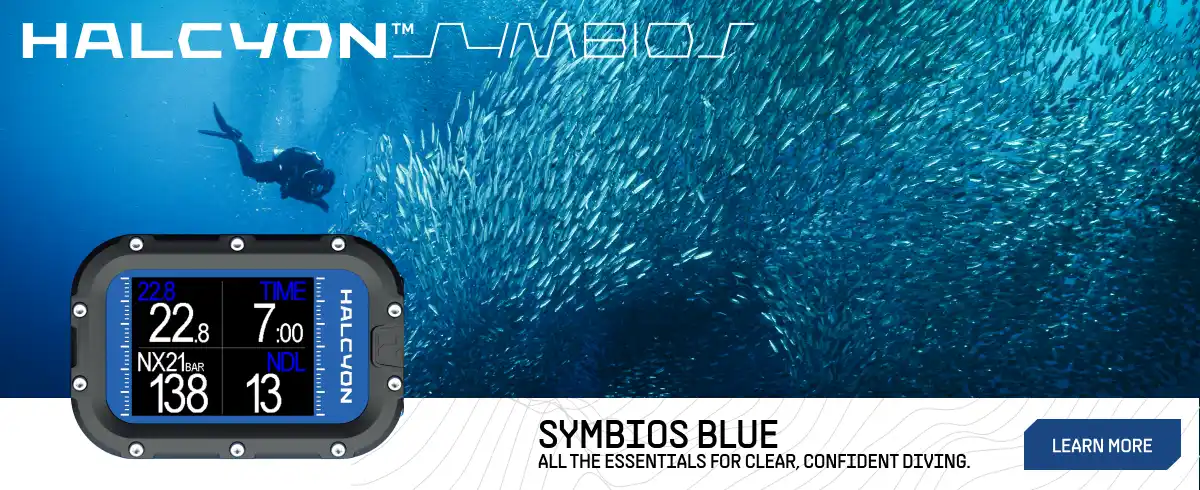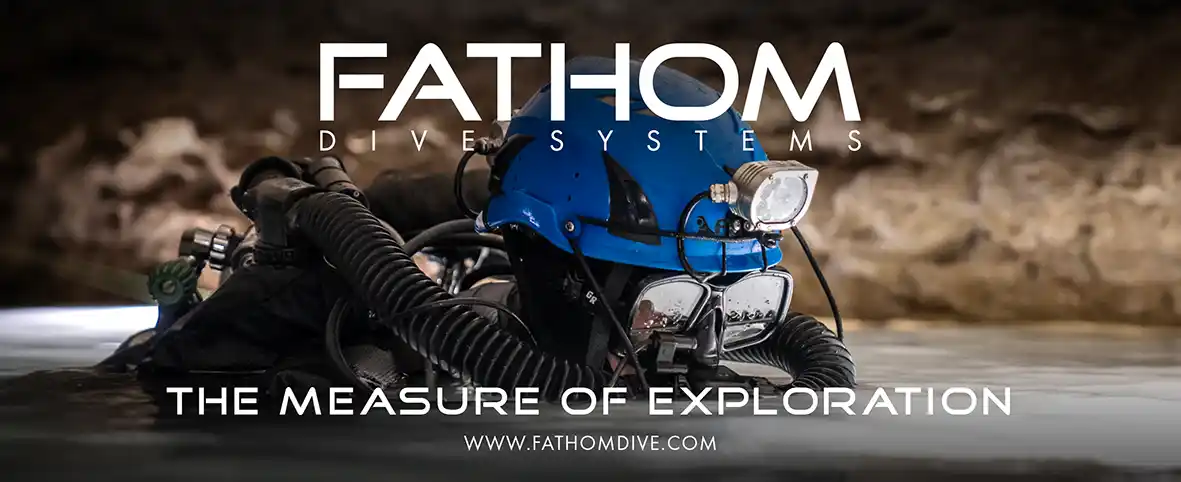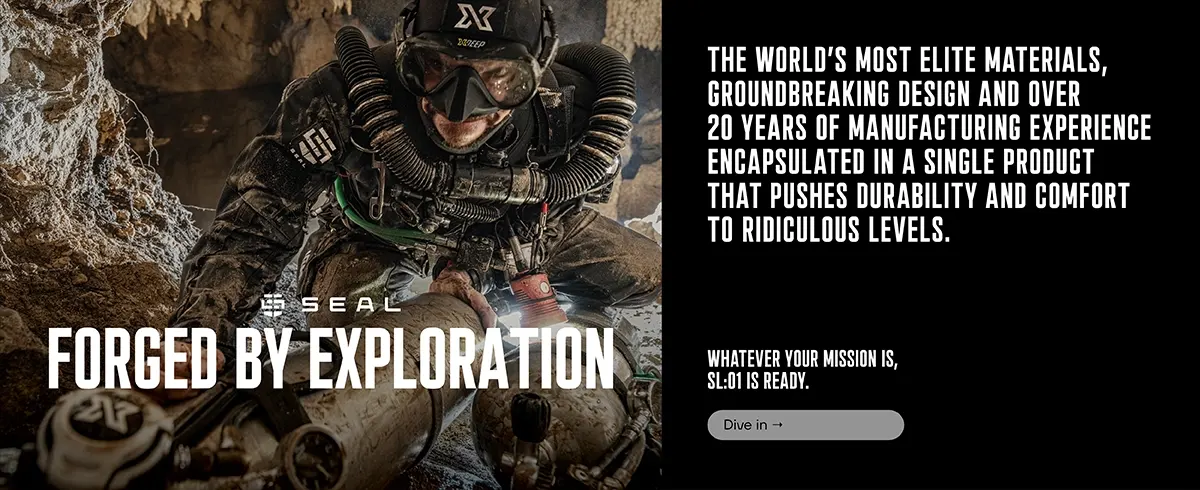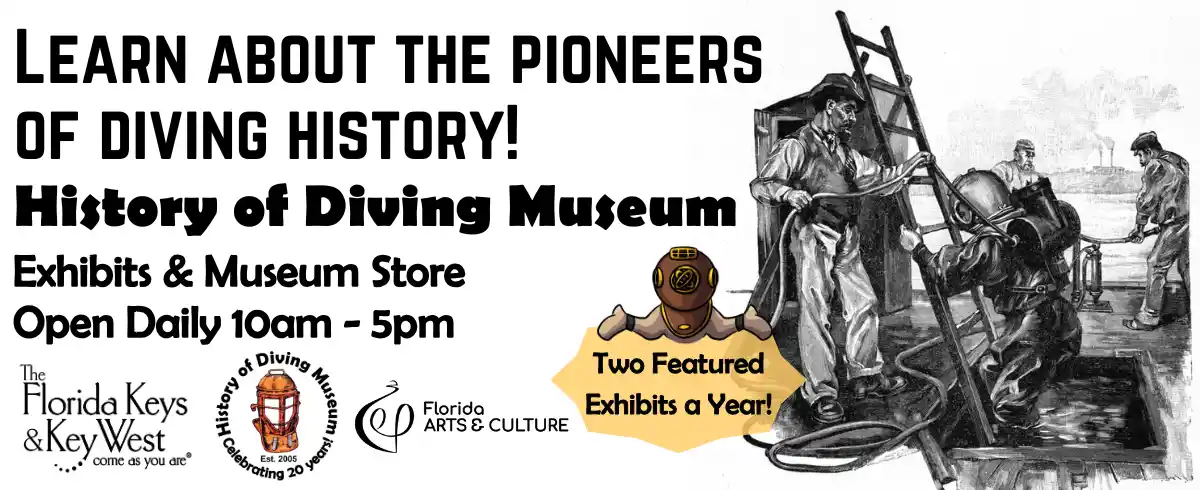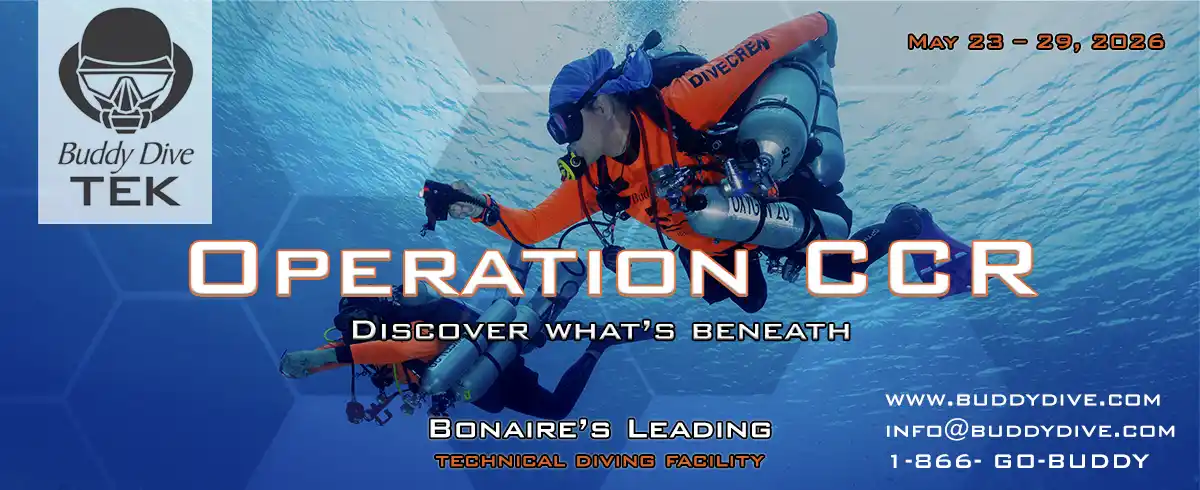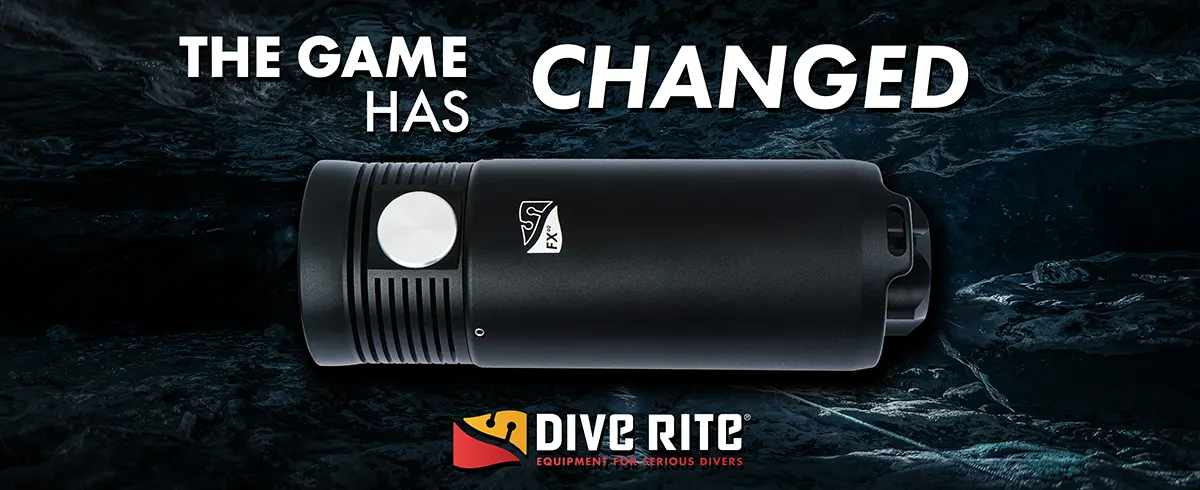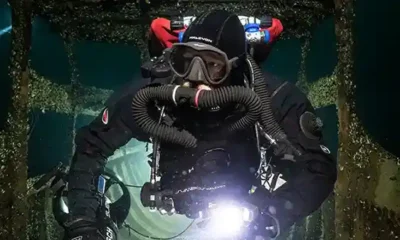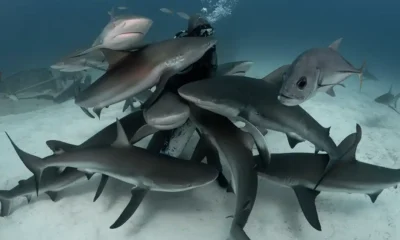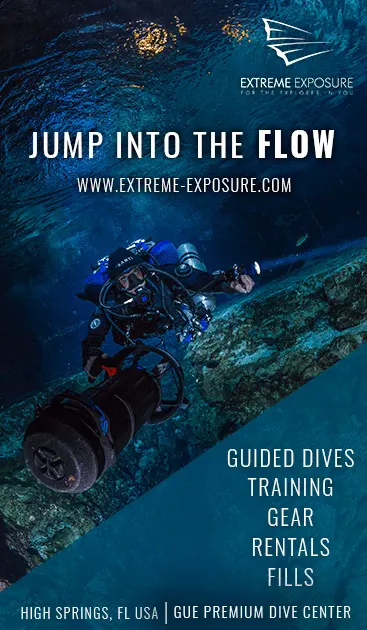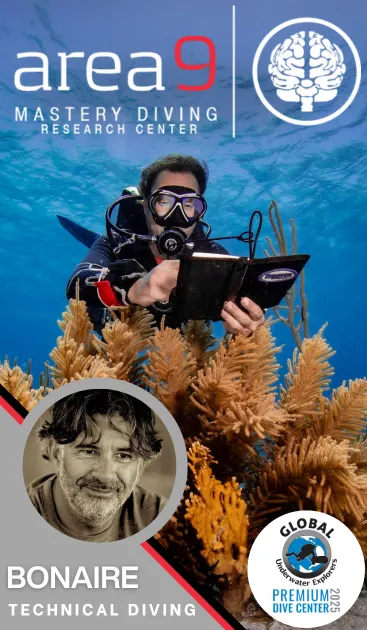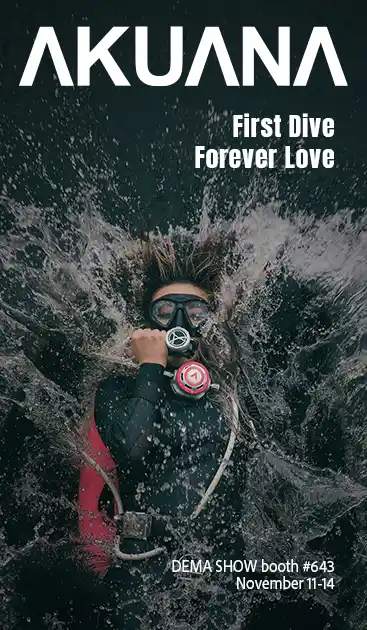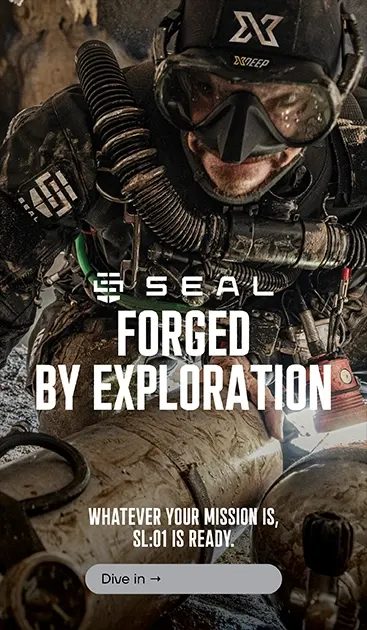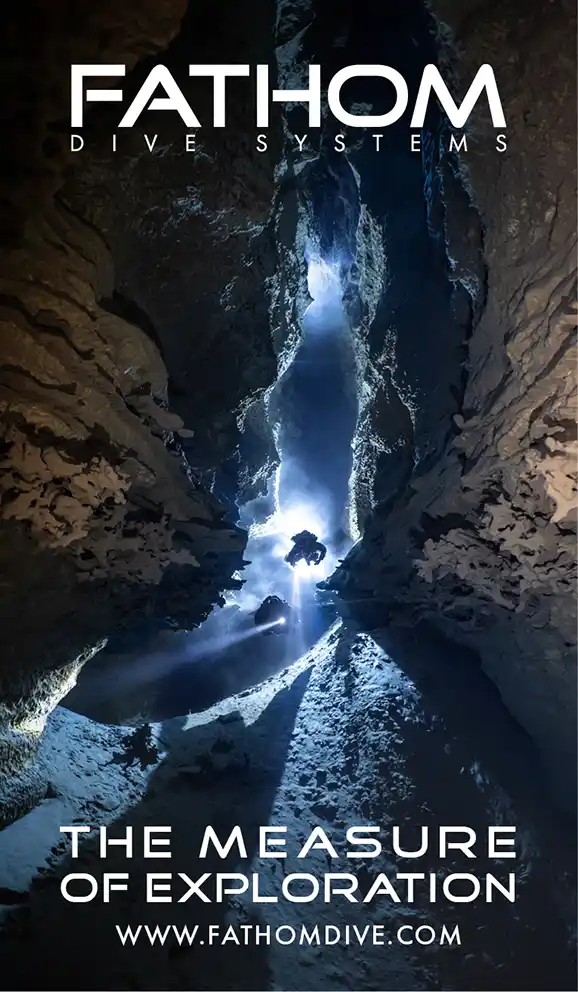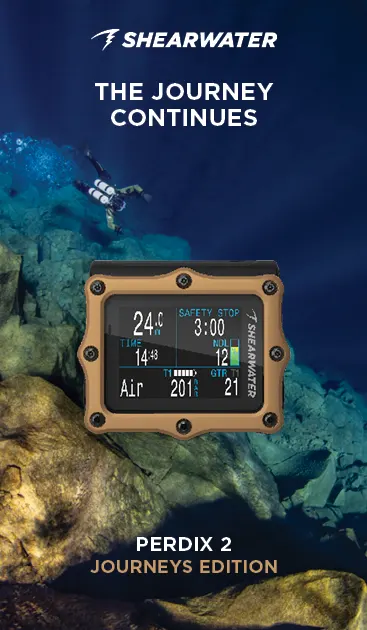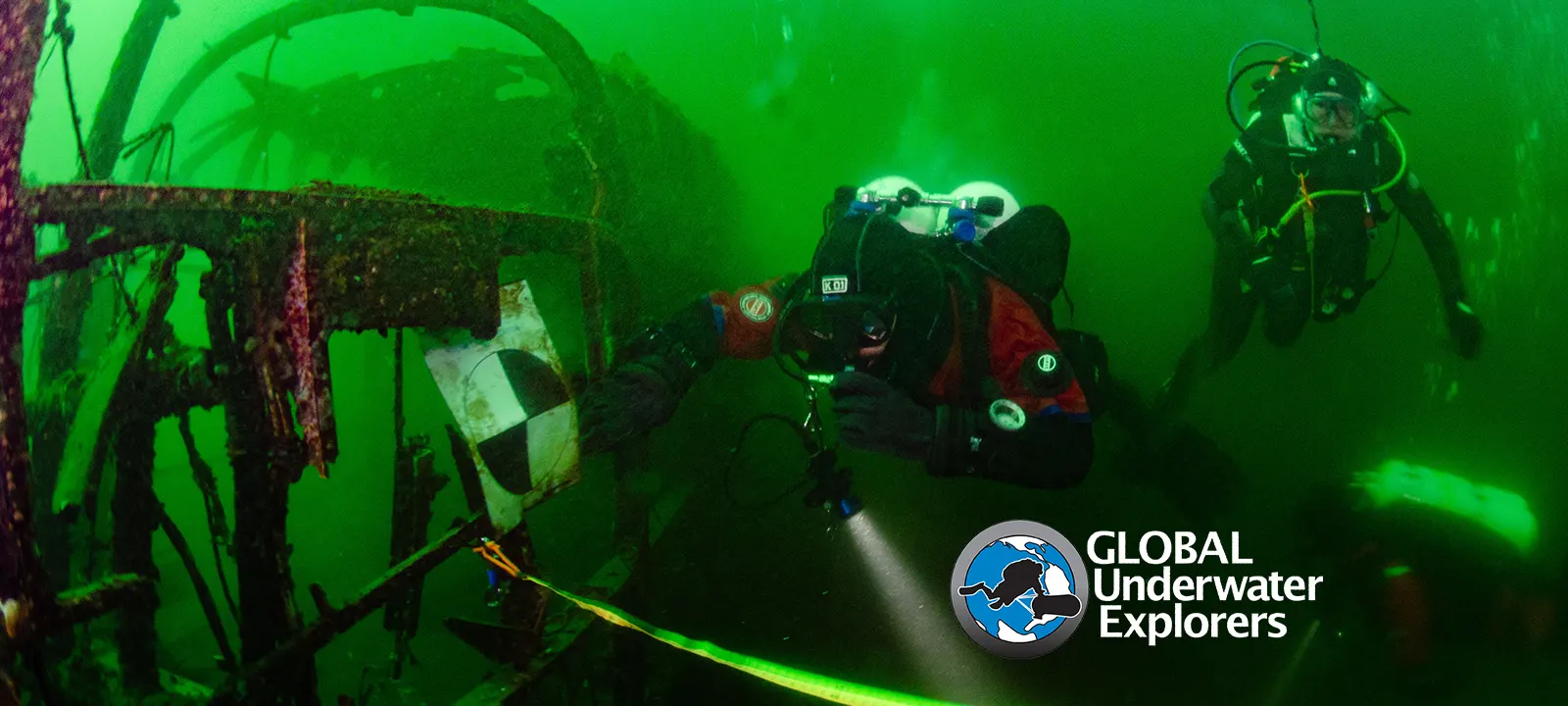
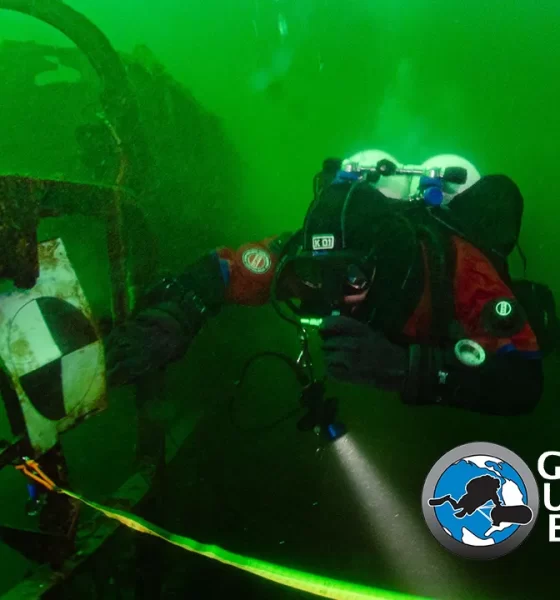
Conservation
Saving Europe’s Native Crayfish: The Role of Divers in Conservation
Robert Corby and Martin J. Maple report on their groups’ efforts to help save the white-clawed crayfish, an emblem of Europe’s freshwater ecosystem, which is under threat. The authors take us for a deep dive into their UK-based Midland Pools Project, where divers are helping to support ark sites and providing habitat and population surveying and monitoring. Citizen science to the rescue!
by Robert Corby & Martin Maple
The white-clawed crayfish is an emblem of Europe’s freshwater ecosystems, but its survival is under threat. Invasive North American crayfish species, carriers of the crayfish plague, have ravaged native populations since their introduction in the 1970s. Despite being listed as endangered by the IUCN and protected by European law, the future of this species hangs in the balance.
In response, conservationists have established ark sites—refuges where native crayfish can thrive away from invasive counterparts. These efforts rely on habitat monitoring, with divers playing a crucial role. Through citizen science initiatives, divers are helping to track crayfish populations and support these ecosystems.
This article dives into the Midland Pools Project, where divers have explored quarries turned conservation sites. From the heritage of Newbold Quarry to the resilience of Ensor’s Pool, their work offers hope and insights into saving these native crustaceans.
The UK has one species of native freshwater crayfish, the white-clawed crayfish Austropotamobius pallipes. Since the 1970s, they have declined in English rivers, having fallen victim to competition from non-native species, most notably the North American signal crayfish (Pacifastacus leniusculus), and a disease called crayfish plague that they carry.
Crayfish plague is caused by the water mold Aphanomyces astaci, which has a swimming spore that can transmit from infected or recently dead animals. The fungus attaches to thin areas of the cuticle and grows through the tissue. It is fatal to European crayfish within two weeks of infection. In the absence of crayfish, A. astaci is cleared from the water within about two weeks.
White-clawed crayfish are listed as endangered on the IUCN Red List of Threatened Species and are protected by European law. All the crayfish monitoring described in this article met the requirements of the regulations and used approved method statements and risk assessments under appropriate levels of professional supervision.
In order to conserve white-clawed crayfish, new populations can be established by relocating individuals into suitable “ark sites.” These are river head pools or, ideally, lakes that are isolated from invasive species. Ongoing monitoring helps to confirm the continued health of the populations but is very expensive. Citizen science projects can offer a cost-effective solution to this.

Midland Pools Project
The counties of Leicestershire and Warwickshire in the English midlands are as far from the sea as you can be in Great Britain. However, there is an industrial legacy that has left water-filled quarries across the region.
Since 2018, we have been working with local landowners and site owners at six sites (see Table 1). In the past, these quarries extracted various minerals, including clay for brickmaking and granite or slate for building, but each quarry has now been returned to nature and forms part of the industrial heritage of the area. Some also have geological importance.
We established a project with the aim of providing opportunities for scientific diving to the local diving community and to develop divers with the necessary skills to go on to contribute to other citizen science projects. The project was registered with Project Baseline in March 2020.
The project sought to answer the following questions:
- What is in the quarry pools?
- Is the aquatic environment favorable or unfavorable?
- Is the aquatic environment improving, declining, or remaining the same?
The project objectives are to:
- Identify divers who are interested in participating in diving projects and provide them with opportunities to safely build capacity
- Carry out historical research on the sites and compare this with submerged evidence
- Map the quarry pools by various methods
- Set up a visibility and temperature monitoring station at each site
- Survey the wildlife present
- Sample the water for chemical analysis
- Remove litter
A team was recruited from the local diving community, and over multiple project days we dived the quarry pools and recorded what was there (wildlife and cultural heritage), collected water samples for chemical analysis, installed monitoring stations (including temperature loggers), and made visibility measurements. We also recovered huge amounts of surface and submerged litter from the water.
In this article we focus on the monitoring of freshwater crayfish in selected ark sites.

Newbold Quarry
Newbold Quarry is a former blue lias (limestone and shale) quarry in the village of Newbold-on-Avon in Warwickshire. Lime was made at the site from 1850, but flooding stopped operations in 1923, and it closed in 1927. The quarry was used as a canal reservoir until the 1980s and was taken over by the local authority in 1991 to form a Local Nature Reserve. White-clawed crayfish had been recorded at this site.
A GPS-located base station was set up on one of the 6 m/20 ft shelves comprising a Secchi disk and temperature logger. Subsequently, we have added temperature loggers near the surface and at 15 m/50 ft to investigate inter-seasonal changes in surface and bottom temperature. The quarry contains the buried remains of a blockhouse and small pumping barge, along with rail tracks that would have carried tubs for conveying limestone out of the quarry. As with all the sites in this project, cars have been dumped in the water, mostly from before the 1990s.
The team confirmed the presence of white-clawed crayfish during wildlife surveys between May 2018 and August 2020. The sedimentary rock walls provide refuges for crayfish, and water chemistry showed (amongst other results) favorable levels of calcium and magnesium, required for crayfish exoskeleton development and moulting, and low levels of phosphate and nitrate, which at high levels cause eutrophication.

Diver surveys
Numerous fish species were recorded, including pike, perch, bullhead, carp, and roach, as well as freshwater sponges. Zebra mussels (Dreissena polymorpha), which are a non-native species, were also found colonizing hard surfaces.
Unfortunately, signal crayfish were observed by the team in November 2021, possibly having entered the pool from the adjacent Oxford Canal, which is only 50 m/165 ft away, or from introduction by people. These included both males and berried (egg-carrying) females, and so a breeding population could be establishing itself. It is likely that these crayfish were also infected by crayfish plague. No further sightings of white-clawed crayfish have been made.
While diver surveys are considered the most effective method of monitoring crayfish in water over 40 cm/15 in deep, since traps are size-selective and avoided by berried females, an emerging monitoring technique is environmental DNA (eDNA) analysis. To confirm the presence of crayfish species and plague, we are collaborating with other groups to obtain eDNA analysis of water samples from the quarry and canal. This could help establish the source of the invasive species.
Factors such as population density and competition can drive emigration of signal crayfish. Invasive species are more frequent dispersers due to their higher levels of activity and boldness, and they have been recorded moving up to 1 km/0.6 mi in a single day.
There is also the possibility that signal crayfish were introduced by people. Reasons for this include forages stocking the pool to harvest the increased numbers at a later date or, more sinisterly, as a retaliation for the increased enforcement of the prohibition of fishing at this site, which led to recent local opposition.

Ensor’s Pool
Ensor’s Pool in Nuneaton, Warwickshire, is a former clay pit, and the extracted Etruria marl was used for brickmaking. It is a Site of Special Scientific Interest (the highest level of importance in Europe) for the population of white-clawed crayfish, estimated to contain a remarkable 50,000 animals.
Sadly, it has been assumed that the population went extinct following the release of a signal crayfish into the pool that had been rescued by an animal welfare charity. A government-sponsored trapping survey in September 2014 found no crayfish present.
This site was found to contain submerged industrial heritage, including the remains of trackways, tubs, and a series of telegraph poles. A Secchi disk and temperature logger were set up on one such pole at a depth of 8 m/26 ft.
During our wildlife surveys, the team was able to confirm the presence of white-clawed crayfish on three occasions:
- Two white-clawed crayfish observed, 7 June 2020;
- Eight white-clawed crayfish observed, 26 October 2020; and
- Two white-clawed crayfish observed, 27 February 2021.
It should be noted these were daytime sightings of animals out in the open and not the result of a systematic nocturnal search. The low numbers are therefore not of particular concern; their presence is the key finding. No invasive crayfish species were found.
The reasons for the survival of white-clawed crayfish at this site are not clear. Given only a single invasive crayfish was apparently introduced, it must be assumed that this was not a berried-female, and so a population of signal crayfish was not able to establish. The rapid white-clawed crayfish population crash was most likely the result of crayfish plague, and although pollution cannot be ruled out, there is no evidence for this. While it is assumed that plague would wipe out the entire population, in this case, a small number of crayfish did survive. This could either be due to resistance to plague, which would be extremely exciting albeit not totally unprecedented, or possibly that the population density became too low for effective disease transmission.
The water chemistry was found to be broadly favorable to crayfish, with no evidence of eutrophication. Fish species are less diverse compared with Newbold Quarry, with perch being the main species. Zebra mussels are also observed at this location.

Check Clean Dry
The questions of whether the environment is favorable or not, and whether it is improving or declining, are more complicated to answer than expected at the start of the project and depend upon the baseline parameters and assumptions from which the assessment is made. Of course, the problem of changing baselines was identified many years ago and is one reason for Project Baseline being established.
The presence of non-native species is of concern, albeit (for example) the zebra mussels observed are extremely common and do not appear to be causing harm. The presence of a signal crayfish is more concerning, and a breeding population in Newbold Quarry does pose an immediate threat to the survival of the native crayfish population at that location.
Litter is also a threat to wildlife. While anglers can inadvertently spread water borne diseases, the more immediate threat to wildlife comes from the snagging and loss of hooks and line. We have observed that at both the sites described here, birds have died due to ingestion of angling hooks. While public awareness of so-called “ghost fishing” gear in the sea is increasing, its presence in freshwater lakes goes largely unobserved.
People provide a means for invasive species to hitch a ride from one location to another, most often accidently but sometimes intentionally.
Divers are less likely to transfer material from site to site compared to anglers, but it is still important that we:
- Check equipment, boats, and clothing after leaving the water for mud, aquatic animals, or plant material and remove anything you find, leaving it at the site.
- Clean everything thoroughly with fresh water.
- Dry everything for as long as possible before using it elsewhere.
For our part, the monitoring project continues. We have established links with other local authorities and this summer carried out systematic crayfish surveys under license to support partners in establishing new ark sites from these populations.
Acknowledgements
We are grateful to the British Sub-Aqua Jubilee Trust for providing funding, and to the site owners and operators for permission to dive, and our volunteer divers for giving up their time.
Summary of site characteristics prior to this project:


Robert Corby
Rob began diving in 2015 with a BSAC Ocean Diver qualification for holiday diving, but he soon fell in love with UK diving. He progressed to BSAC Advanced Diver and is Chairman of Marlin Sub-Aqua Club, co-managing Project Baseline Midland Pools.
Involved with GUE since 2019, Rob holds a Tech 1 certification and plans to become CCR certified this year. Drawn to GUE for its standardization and project diving skills, he has contributed to projects in Scotland and is an active member of Ghost Fishing UK.
A Trainee Advanced Clinical Practitioner, Rob is completing an MSc this year while balancing his career with family life, including his wife and two young sons.

Martin J Maple
Martin graduated from the University of St Andrews with a degree and PhD in chemistry in 2003. He has worked in energy consultancy for the past 18 years, with a recent focus on hydrogen as a green fuel.
He learned to dive with BSAC in 2013 and is currently a BSAC Advanced Diver and Open Water Instructor, and serves as Diving Officer of his local BSAC branch. He joined GUE in 2018 and has completed Tech 1, Cave 1, and CCR 1 classes, as well as a recreational ITC. He has a particular interest in cold water wreck diving and scientific diving.
He is co-project manager of Project Baseline Midland Pools, which was awarded the Prince of Wales Prize in 2022. Martin is a trustee of Project Baseline UK and has volunteered with Ghost Fishing UK, various Project Baseline initiatives, and the HMS Exmouth project.

